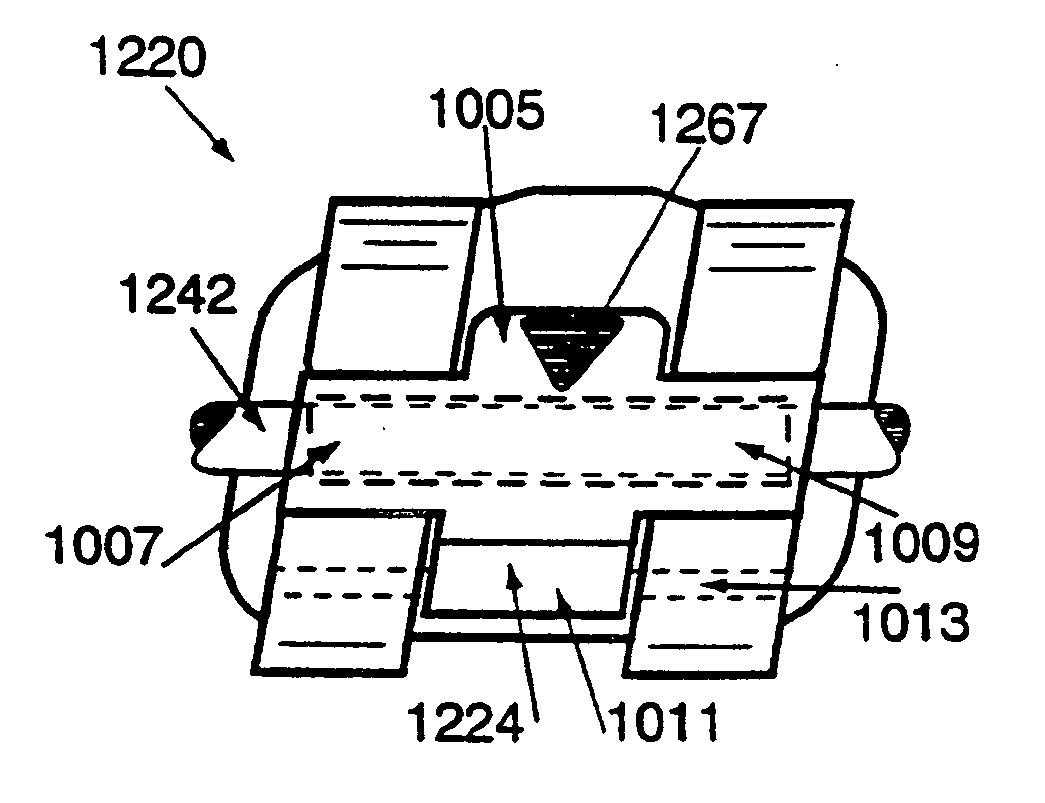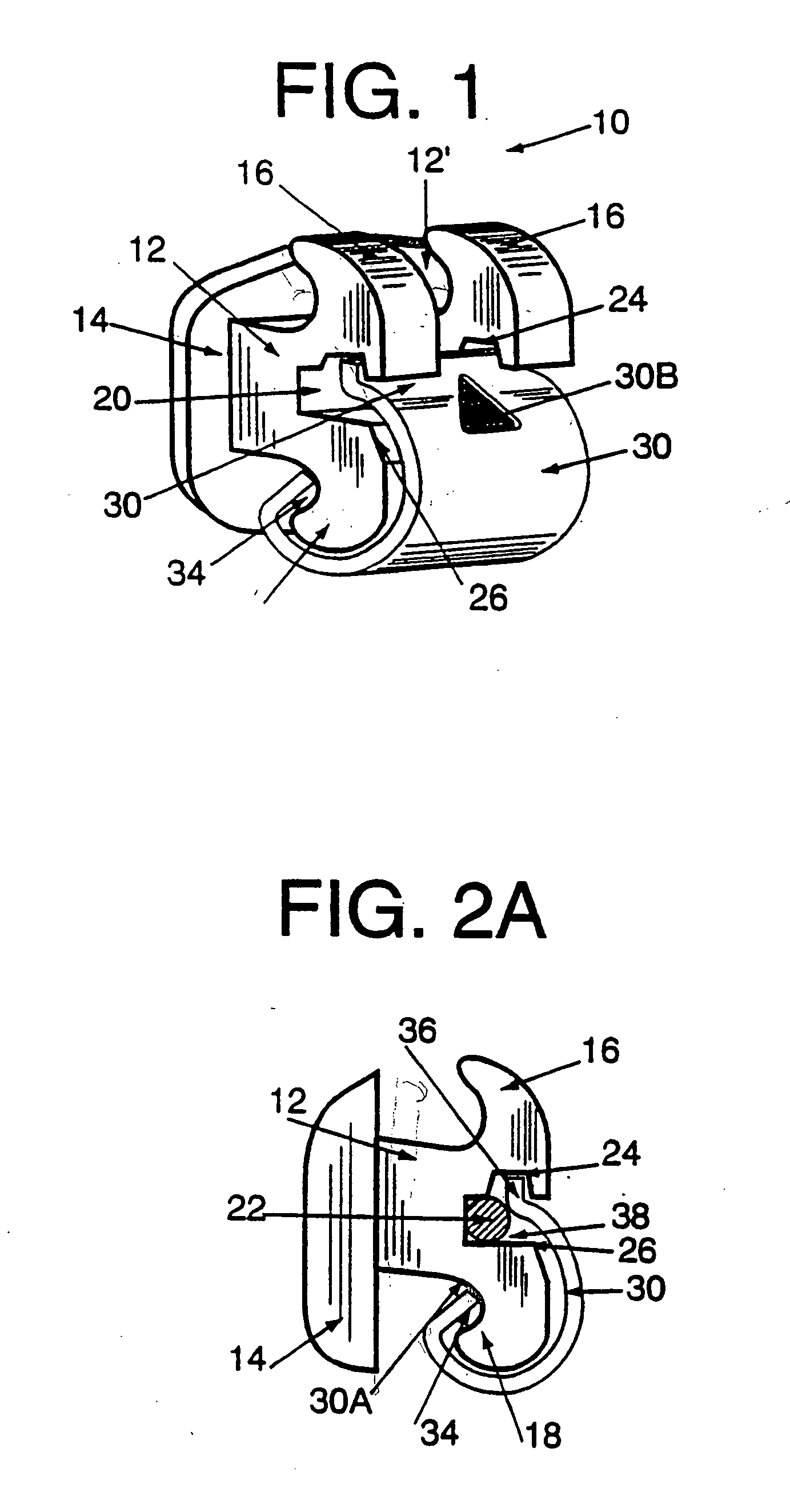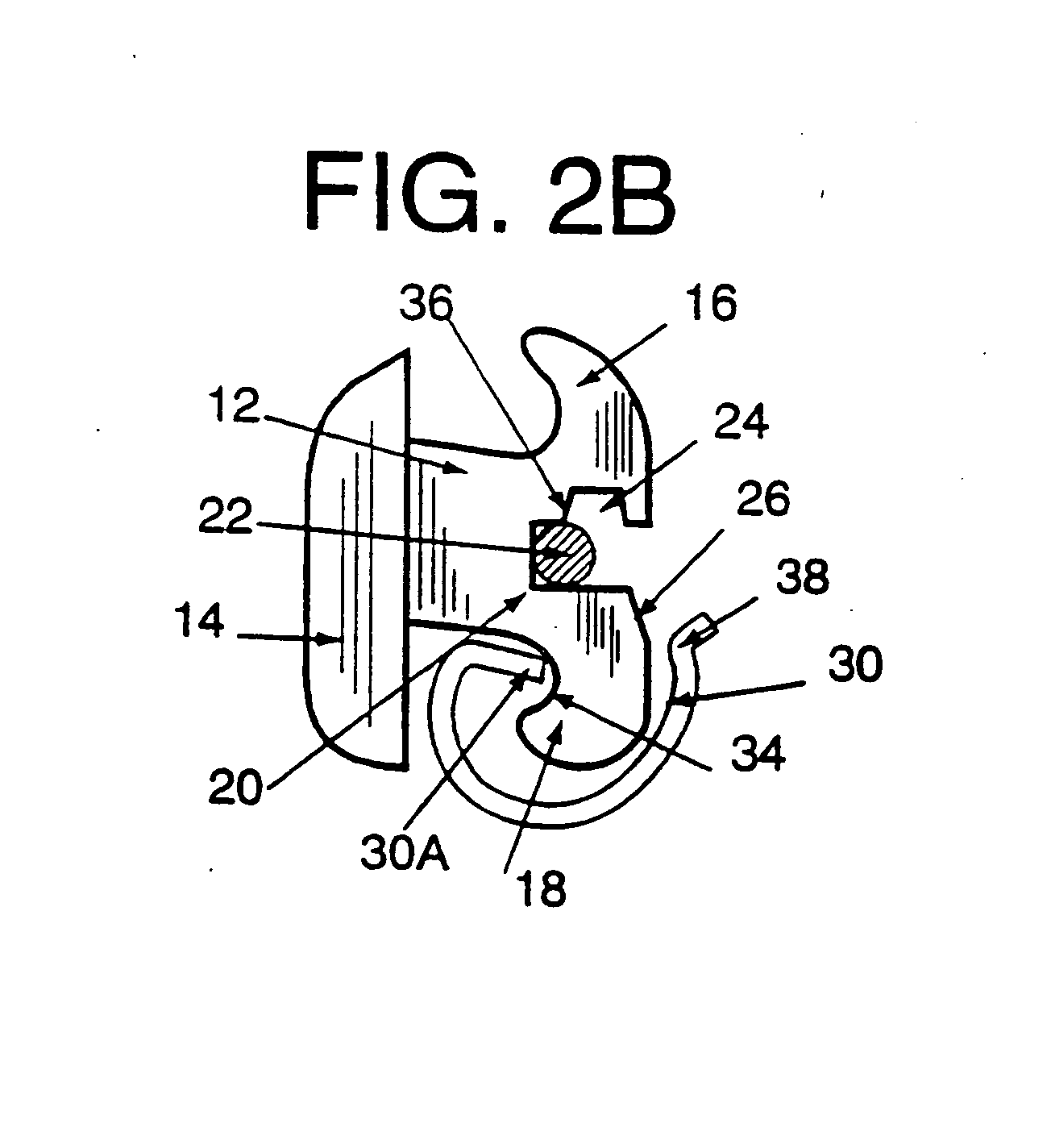Orthodontic bracket
a technology for orthodontic brackets and brackets, applied in the field of pre-engaging orthodontic brackets, can solve the problems of increasing the friction level, long chair time, and elastic ligatures are known to lose their elasticity with time, and achieve the effect of enhancing treatment progress and facilitating hygien
- Summary
- Abstract
- Description
- Claims
- Application Information
AI Technical Summary
Benefits of technology
Problems solved by technology
Method used
Image
Examples
Embodiment Construction
[0147] Referring now to FIGS. 1 and 2, a pre-engaging twin orthodontic bracket is shown and is generally indicated to by reference numeral 10. As can be seen, orthodontic bracket 10 includes a body 12 and a lingual mounting pad 14 attached to the body. The mounting pad 14 has a lingual surface to be attached to a tooth. A pair of laterally spaced gingival tie wings 16 and a pair of laterally spaced occlusal tie wings 18 extend from a labial surface of the body 12. The gingival tie wings 16 and the occlusal tie wings 18 curve lingually. An archwire slot 20 extends mesiodistally across the body and between the gingival and occlusal tie wings at opposed mesial and distal sides of the body and opens labially to receive an archwire 22. The archwire slot 20 is interrupted in the interwing region 12′ of the body. A V-shaped deflection notch is formed in the gingival wall of the archwire slot 20 at its mesial and distal ends extends to define mesial and distal bevelled deflection surfaces 2...
PUM
 Login to View More
Login to View More Abstract
Description
Claims
Application Information
 Login to View More
Login to View More - R&D
- Intellectual Property
- Life Sciences
- Materials
- Tech Scout
- Unparalleled Data Quality
- Higher Quality Content
- 60% Fewer Hallucinations
Browse by: Latest US Patents, China's latest patents, Technical Efficacy Thesaurus, Application Domain, Technology Topic, Popular Technical Reports.
© 2025 PatSnap. All rights reserved.Legal|Privacy policy|Modern Slavery Act Transparency Statement|Sitemap|About US| Contact US: help@patsnap.com



